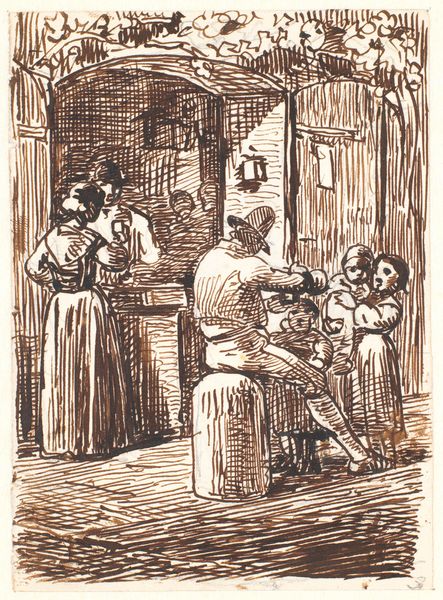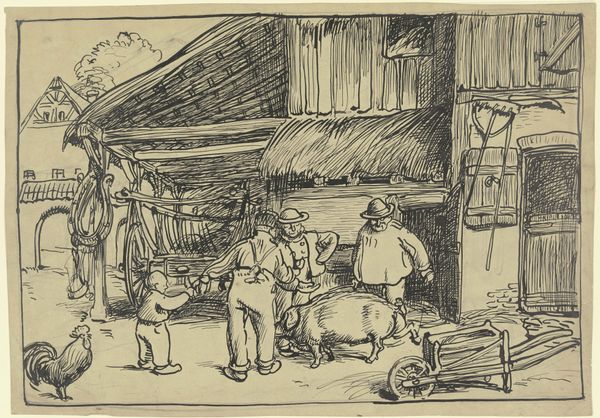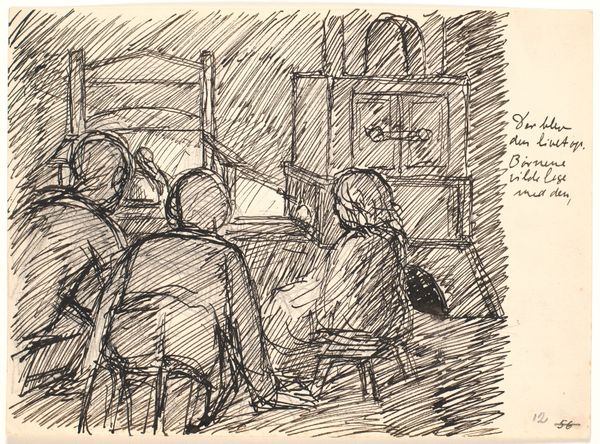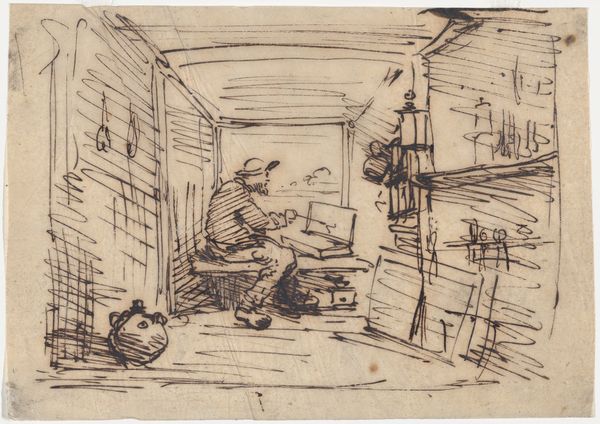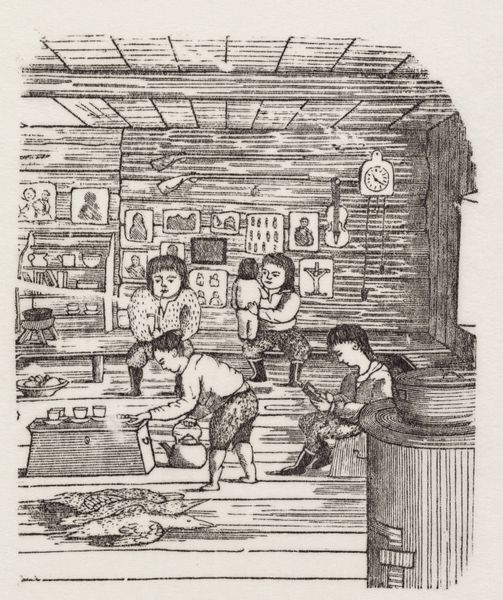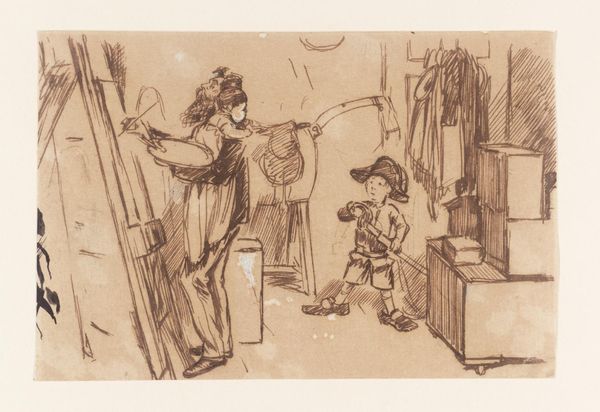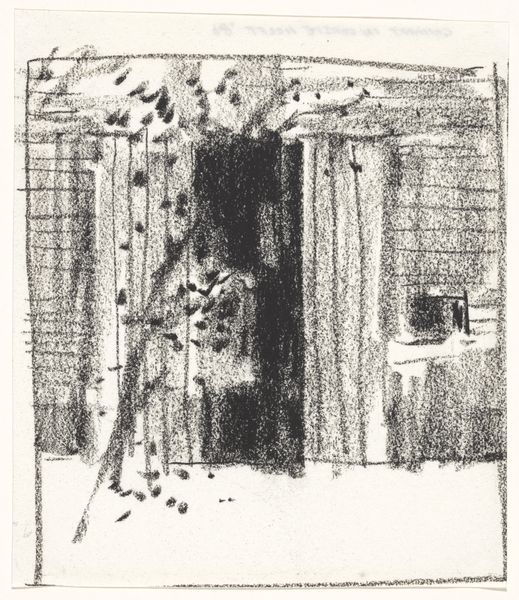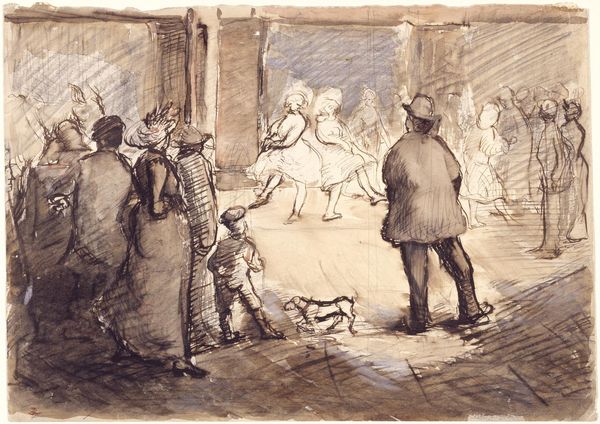
drawing, ink, pen
#
landscape illustration sketch
#
drawing
#
ink drawing
#
pen drawing
#
mechanical pen drawing
#
pen illustration
#
pen sketch
#
personal sketchbook
#
ink
#
pen-ink sketch
#
pen work
#
pen
#
cityscape
#
genre-painting
#
storyboard and sketchbook work
#
italian-renaissance
Dimensions: 100 mm (height) x 120 mm (width) (bladmaal)
Curator: This is Martinus Rørbye's "Italiensk (?) gadescene med kone med kurve", which translates to "Italian (?) street scene with woman with basket", created between 1840 and 1841. It’s currently held here at the SMK, Statens Museum for Kunst. Editor: My immediate impression is one of casualness, like a quickly captured snapshot of daily life. The composition centers a woman in the foreground with a man in what appears to be an opening in the background. It almost feels like a theatrical staging due to the crisp, graphic quality. Curator: Precisely. Rørbye has masterfully employed pen and ink to construct the scene's spatial depth. The density of the cross-hatching defines forms and creates variations in tone, particularly in shadowing the figures. Editor: Note the hatching. There’s something so immediate about this type of work. This drawing on paper uses minimal material but renders such complexity of human interaction, labor, commerce and daily street life. The artist must have observed a series of specific interactions to generate such details within each character portrayed. Curator: The composition directs our focus intentionally. Observe how the subtle details of the buildings contribute to the drawing’s geometry, enhancing the artwork's overall sense of balance and perspective. This gives insight into how this everyday streetscape is converted to a form worthy of capturing and conserving. Editor: Speaking of which, how were similar items from that period such as baskets crafted? I wonder if Rørbye saw value in what he portrayed being utilitarian alongside high art. The process of creation from basket weaving to his drawing are a form of laborious, tangible creation, and I am curious if they are inherently linked here. Curator: While such historical contexts certainly enhance our understanding, consider how Rørbye organizes lines and forms, constructing an aesthetic experience through balance, repetition, and contrast. The materiality of the drawing in stark dark and light values forces a flattening, yet retains an impactful aesthetic composition. Editor: I find myself moved by the sheer process encapsulated in the image, by how different objects gain status depending on the context of production. Curator: Indeed, this is a study on form as much as it is a rendering of 19th-century street life, with each element considered formally in terms of tonal composition. Editor: And, if anything, it calls into question what even separates 'high' art from more everyday visual culture—like the illustration you might see in a popular broadsheet from that period, with each informing the other, culturally and economically.
Comments
No comments
Be the first to comment and join the conversation on the ultimate creative platform.

